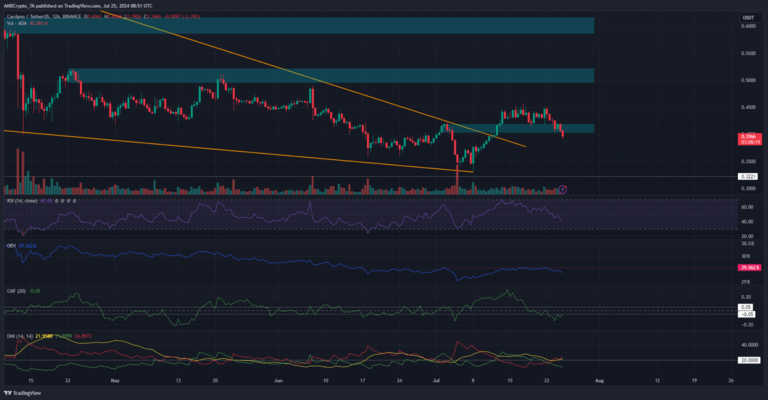
- Charles Hoskinson, founder of Cardano, predicts that the network will surpass Ethereum in ten years and Bitcoin in twenty, driven by its decentralized governance and technological innovations.
- He emphasizes the importance of community-driven development over reliance on venture capital, positioning Cardano as a potential leader in the blockchain space.
Charles Hoskinson, the visionary founder of Cardano, has made bold predictions about the future of his blockchain network. In a recent statement, Hoskinson forecasted that Cardano will outgrow not only Ethereum but also Bitcoin within the next two decades. His optimism centers around Cardano’s technological innovations and unique governance model, which he believes give the network a critical edge over its competitors. Could this be the dawn of a new era for Cardano?
Cardano’s Roadmap to Growth
According to Hoskinson, Cardano is set to surpass Ethereum within ten years and will eclipse Bitcoin in the next twenty. These predictions reflect his confidence in the ongoing development of Cardano, particularly as it enters the Voltaire era. This new phase is designed to bring robust decentralized governance to the platform, allowing Cardano to stand out from other layer-1 networks.
Hoskinson’s confidence comes from Cardano’s potential to offer more than just a transactional system. He envisions a future where governments and large institutions will utilize Cardano’s infrastructure, allowing it to expand its influence and market value beyond that of Bitcoin and Ethereum. Currently, Cardano’s native token, ADA, ranks eleventh in market capitalization, far behind Bitcoin (BTC) and Ethereum (ETH), which hold the top two positions. However, with strategic innovations, the gap could close in the coming years.
The Power of Decentralized Governance
A core part of Hoskinson’s argument for Cardano’s future dominance lies in its decentralized governance. He emphasized that Cardano is not simply about developing a blockchain for speculative purposes; instead, it aims to build a true decentralized community. Hoskinson criticized other blockchain networks for relying on venture capital and centralized intermediaries, which he sees as contrary to the foundational principles of blockchain technology.
By focusing on decentralization, Cardano seeks to provide a blockchain ecosystem that is not controlled by a handful of major stakeholders. The upcoming Voltaire era is set to play a key role in this by enabling the community to participate in decision-making processes, ultimately making the network more resilient and adaptable.
Can Cardano Surpass Bitcoin and Ethereum?
While Hoskinson’s predictions are ambitious, their realization will depend on multiple factors. Market conditions, network adoption, and technological advancements will all influence whether Cardano can surpass the giants of the cryptocurrency world. However, Cardano’s unique focus on decentralized governance and its deliberate approach to building community-driven infrastructure could set it apart in a crowded space.
With the eyes of the crypto community closely watching, only time will tell if Cardano’s vision will lead to the monumental shifts that Hoskinson envisions. Will Cardano truly emerge as the leader of the blockchain revolution? The next decade will be crucial in determining the answer.






